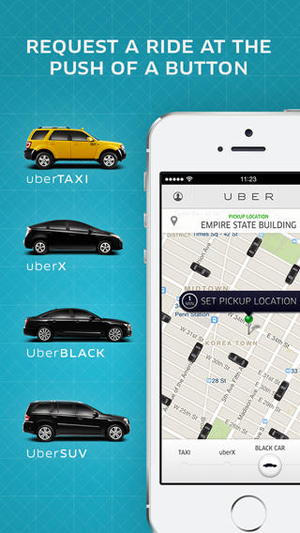What You Should Know About the Uber Phenomenon

Media outlets everywhere shouted news that the 3-year-old ride-sharing service Uber charted an eye-popping valuation of up to $18.2 billion, after closing its venture capital round that raised $1.2 billion. In fact, by Forbes' numbers, Uber is now worth more than Avis and Hyatt combined.
For those who have been sequestered with monks somewhere up in the Himalayas, here's what's behind all the fuss. With Uber, customers can send a text message on a mobile app through the service to reserve a car. Uber charges for the ride based on distance traveled, or time, or demand, or a combination of all three. Uber is also the latest case study of how the "Internet of Things" is driving both innovation and disruption, if you'll excuse the pun.
 The IoT is a phenomenon that is both real and here today. Just ask Uber and their customers. It not only means better, more personalized service, it means billions of connected devices resulting in billions and billions of dollars.
The IoT is a phenomenon that is both real and here today. Just ask Uber and their customers. It not only means better, more personalized service, it means billions of connected devices resulting in billions and billions of dollars.
Technology, data and service are literally bringing a driver to the doorstep and then alerting the customer when they arrive. And, because they've inputted all their credit card info in advance, they don't even have to worry about the bill - that's all done for them. They just thank the driver and then get on with life. What this means to the taxi market is clear: disruption.
But it doesn't stop with people getting from point A to point B. Uber's service could leverage data and provide expanded services that monitor the driver's car and remind them of needed maintenance. The bonus is that the data also helps ensure that Uber drivers are operating safer cars.
Not content with one market, Uber's CEO Travis Kalanick also has other and bigger sites on his horizon. In addition to disrupting the car service market, he envisions Uber as a better solution for logistics and handling. Kalanick sees a similar model for businesses who want a more efficient method to deliver packages, food and other products between two points in a city.
Kalanick is placing bets that Uber is not just an alternative to traditional taxi service, but a game changer in the bigger transportation sector - a disruptive force in a fast-moving logistics environment. The logistical big boys FedEx and UPS will have to go beyond their recent pricing moves that charge by both weight and size of package if they are to remain competitive. By the way, while FedEx doubled their Q4 earnings and beat Wall Street forecasts, simple price changes won't address the big shifts in delivery models.
Businesses everywhere are catching on so they don't have to play catch-up to get in on the action later. The goal is to provide better service. The trick is getting it done by monitoring, measuring and monetizing the millions of "things" around us including the home, the office, the grocery store, the gym and points in between.
Uber is just the latest example of how data and technology are translating into better service (not taxis) and more money. Gartner predicts that the IoT install base will grow to 26 billion units by 2020. Cisco, Nike, Apple and other global brands are also placing their bets.
The only question becomes do you hedge or go all in?
About the Author: Parker Trewin is an award-winning, 16-year high-tech, marketing veteran specializing in brand, communications and content. Residing in San Francisco, CA, Trewin is the Senior Director of Global Communications and Content at Aria Systems, a recurring revenue management software provider. He can be reached at Twitter here: @parkertrewin
Subscribe to Our Newsletter!
Latest in Marketing








